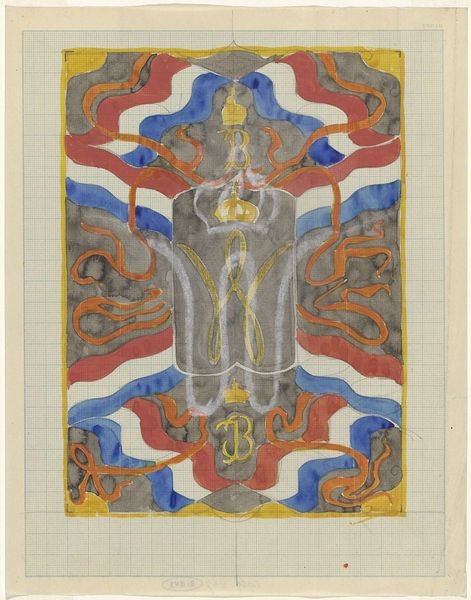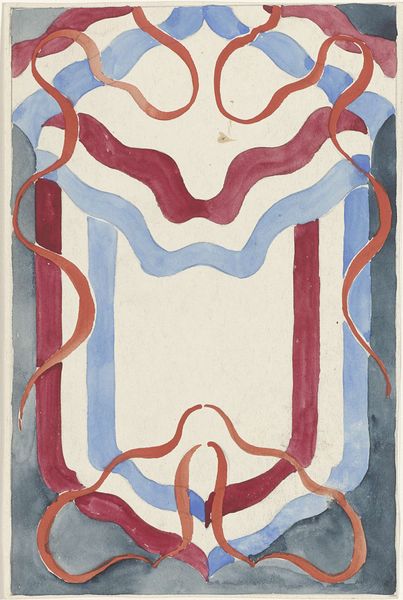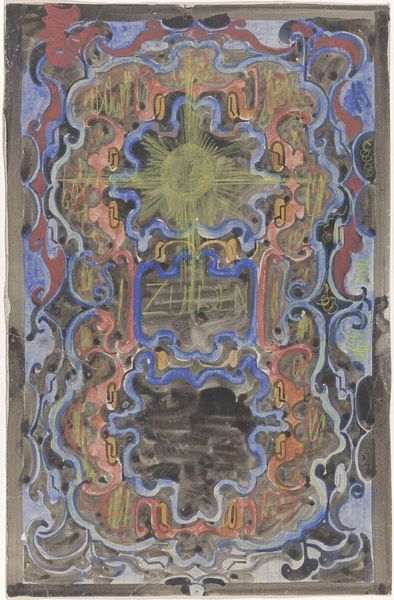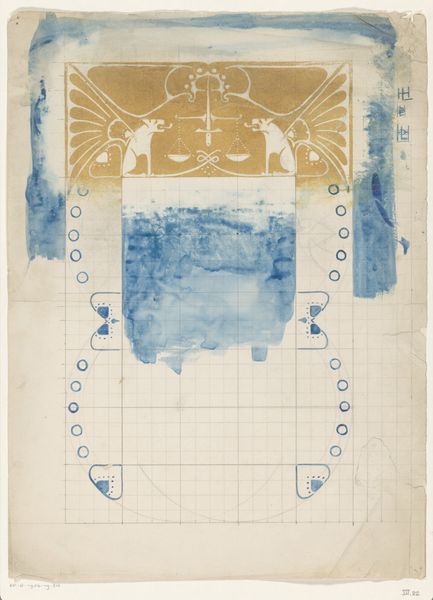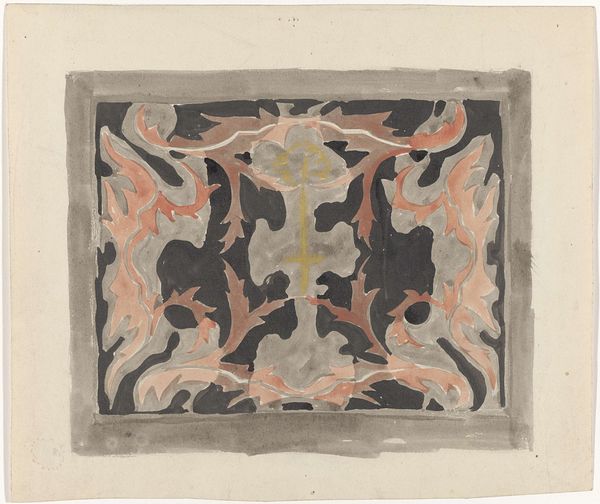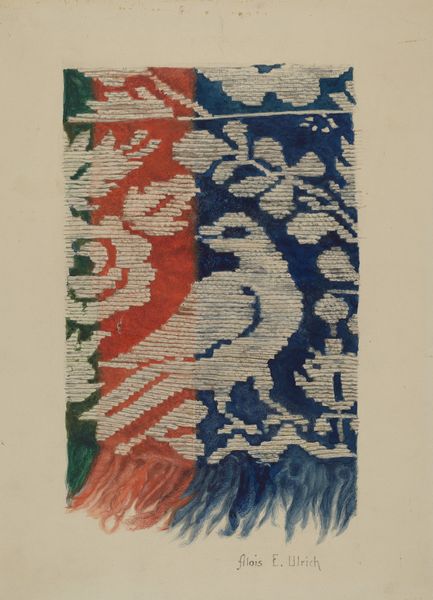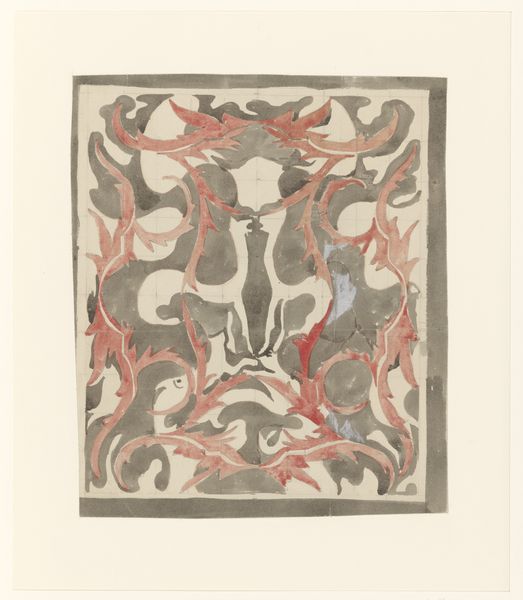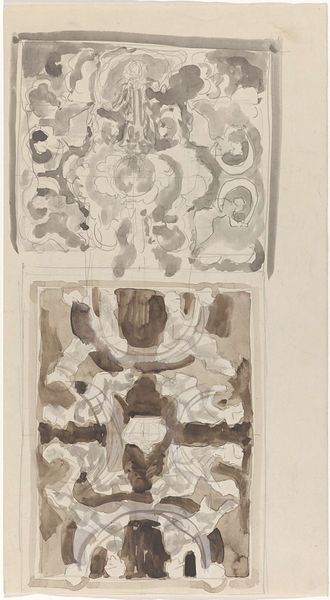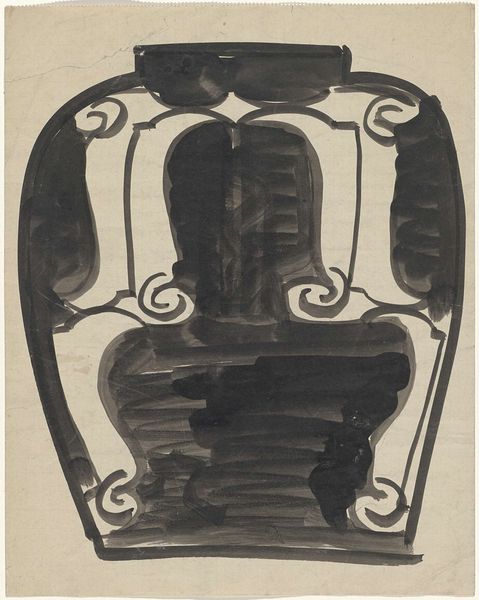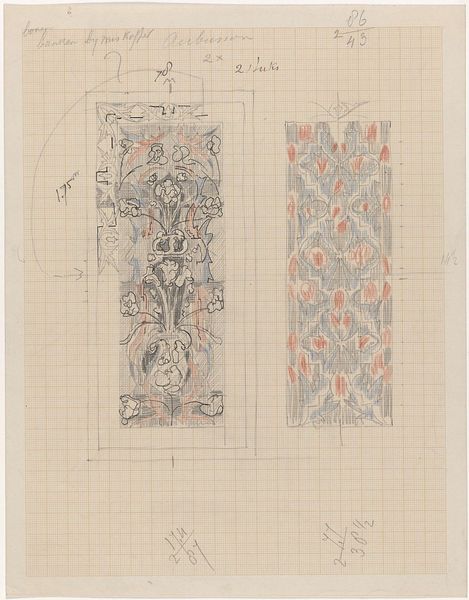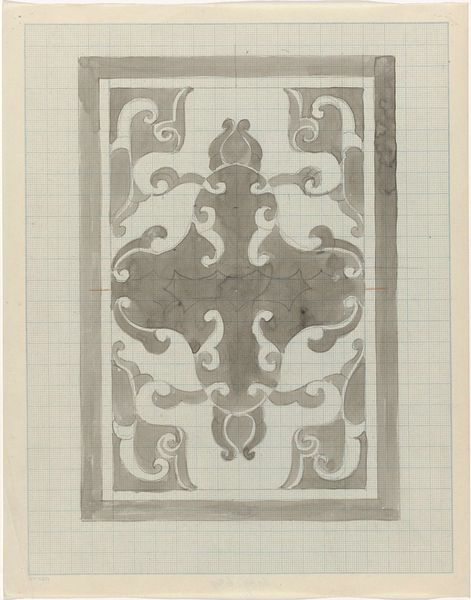
Decoratief ontwerp met het rijkswapen, vlaggen en vaandels 1874 - 1945
0:00
0:00
drawing, watercolor
#
drawing
#
water colours
#
watercolor
#
geometric
#
symbolism
#
decorative-art
Dimensions: height 280 mm, width 220 mm
Copyright: Rijks Museum: Open Domain
Curator: Let's discuss this watercolor work from the Rijksmuseum titled, "Decoratief ontwerp met het rijkswapen, vlaggen en vaandels," by Carel Adolph Lion Cachet, dating somewhere between 1874 and 1945. I'm struck by how the bold colors are presented on what appears to be graph paper. It feels both precise and somewhat… unfinished? What do you see in it? Editor: The grid underneath the painting certainly suggests a pre-planned geometric design, or maybe even a pattern intended for mass production. The Dutch flags and heraldry give it a clear nationalistic bent, yet it's just a watercolor sketch. Why not produce a final piece? Curator: Precisely. We need to think about the means of production and intended consumption here. Was this sketch meant for a tapestry, a banner, or perhaps even a piece of propaganda? Consider the time frame. What nationalistic or patriotic symbols were considered worthy? It seems like an emblem design or possibly a coat of arms study with underlying political messaging of power and nationalism? What’s missing in the work as a consequence of it remaining a sketch? Editor: If it were mass-produced as tapestry, the hand-crafted nature would disappear into the process. So, the value shifts depending on the context of labor. Does the "unfinished" nature impact it? Curator: Yes! Think about what it would have taken to create a tapestry or painting from this sketch in Cachet’s time. What processes, labor, or materials would be considered valuable based on craft tradition or contemporary artistic developments? The unfinished aspect lays bare the labor. The craft of this drawing gives the unfinished nature of it, allows it to become an authentic depiction. Editor: Seeing the design in the context of labor really makes you think about the different valuations of “art” versus “craft,” doesn’t it? Curator: Exactly. By acknowledging those valuations and material choices and production means, we can re-assess its worth and gain an insight into the purpose and power.
Comments
No comments
Be the first to comment and join the conversation on the ultimate creative platform.
